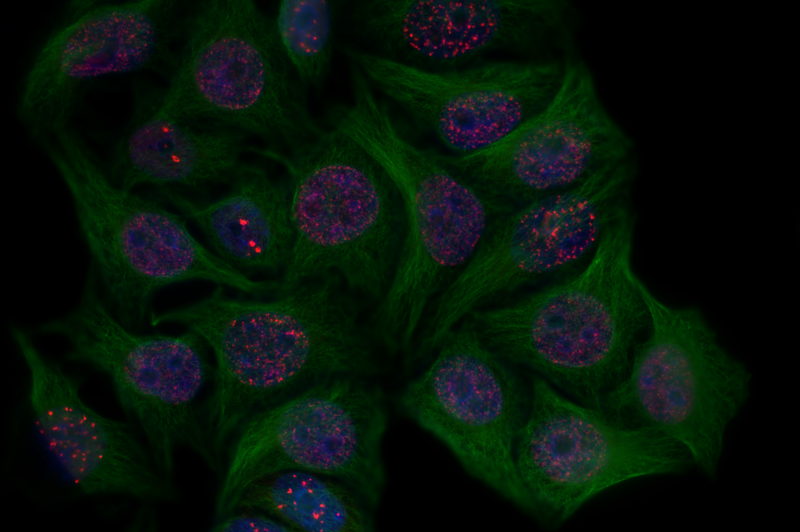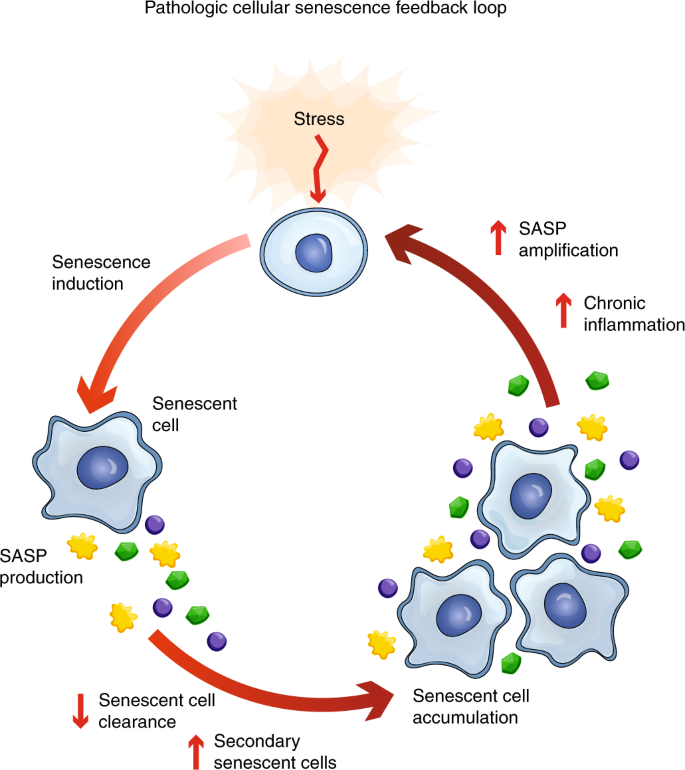Targeting Senescent Cells: A Path to Combat Aging Effects
Written on
Chapter 1: The Aging Contagion
As we age, our bodies become increasingly susceptible to the effects of aging. One particularly concerning aspect is the presence of senescent cells. What if we could specifically target these problematic cells?

Senescent cells, marked by their red dots indicating DNA damage, represent a significant challenge in the aging process.
Aging is an unavoidable part of life, and it stands as the primary risk factor for a multitude of diseases and increased mortality. The deterioration associated with aging can be attributed, in part, to the behavior of senescent cells, which become harmful to their surrounding environment. When cells enter a state of senescence, they cease to divide and begin to release a range of harmful molecules—collectively known as the senescence-associated secretory phenotype (SASP)—which can negatively impact neighboring cells. This cycle perpetuates itself, causing more cells to become senescent, and thus, aging spreads.

The feedback loop illustrated here shows how SASP can induce further senescence, leading to a detrimental cycle.
Chapter 2: Strategies for Targeting Senescent Cells
Given the adverse effects of cellular senescence, researchers are exploring various strategies to combat these aging symptoms. One potential avenue is to utilize stem cells to rejuvenate aging tissues or to reprogram existing cells back to a more youthful state.
Another approach focuses on eliminating senescent cells from the body. Several therapeutic strategies have been developed to inhibit SASP or to utilize agents known as senolytics to remove these problematic cells.
In the video "Targeting Senescent Cells? Dose and Timing Matters - with Dr. Greg Kelly," the significance of dosage and timing in targeting senescent cells is discussed, shedding light on the complexities of this approach.
Identifying Targets
Senescent cells exhibit unique traits that make them identifiable and potentially removable. They tend to be larger, possess more leaky mitochondria, and activate pathways that prevent their death. Recent reviews have highlighted advancements in senolytic therapies that leverage these characteristics.
Additionally, these cells express specific surface proteins, known as senescence-associated self-antigens, which could be targeted through immunotherapies similar to those used for cancer treatments. This could lead to the development of a novel anti-aging vaccine, although so far, these methods have only been tested in animal models. Challenges remain, including high costs and the need for immune suppression.
The second video, "Judith Campisi | Targeting Senescent Cells to Alleviate Aging: A Simple Task?" discusses the complexities and potential of targeting senescent cells to mitigate the effects of aging.
Mechanisms of Action
Senescent cells also utilize anti-apoptotic pathways known as SCAPs to evade normal cell death. Compounds like fisetin and a combination of dasatinib and quercetin have shown promise in disrupting these protective networks in studies, though their use in humans is not yet recommended.
Moreover, an increase in lysosome numbers and activity is observed in senescent cells, which can be exploited using selective prodrugs activated by lysosomal enzymes. This approach hinges on the idea that senescent cells, with their heightened lysosomal activity, may be more susceptible to these treatments.
There’s also ongoing research into the altered internal chemistry of senescent cells, which may involve changes in membrane permeability and pH levels. Addressing these changes could be critical for developing effective therapies.
Looking Ahead
What does the future hold for human trials targeting senescent cells? While there is ongoing research, the current landscape remains limited. Many questions remain unanswered, particularly regarding whether findings from animal studies will translate to human applications.
The complexities of senescent cells—including their diverse populations and unique characteristics—add layers of difficulty to treatment strategies. As noted by researchers, there are still many gaps in our understanding of these cells and their roles in aging.
In summary, the journey toward effectively targeting senescent cells to alleviate aging effects is still in its early stages, and further research is essential for unlocking their potential.